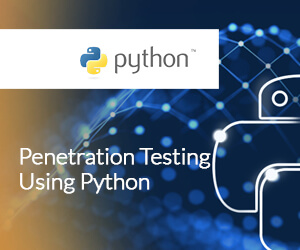- Python Fundamentals:
- Programming basics (variables, data types, control flow, functions, object-oriented programming)
- Security libraries (requests, scapy, beautifulsoup4)
- Network Security Fundamentals:
- Network protocols (TCP/IP, ports, communication)
- Enumeration techniques (discovering devices, services, user information)
- Vulnerability Assessment and Exploitation:
- Common vulnerabilities (SQL injection, XSS)
- Exploit development (principles, using libraries like scapy)
- Password Cracking:
- Hashing algorithms and password storage
- Python tools (Hashcat, John the Ripper)
- Post-Exploitation and Reporting:
- Maintaining access on compromised systems
- Lateral movement within a network
- Structured reporting of findings and recommendations
- Ethical Considerations and Legal Aspects:
- Responsible disclosure and reporting vulnerabilities
- Understanding relevant laws and regulations
- Programming Fundamentals:
- Variables, data types, operators, control flow, functions
- Familiarity with any programming language (optional, but beneficial)
- Networking Fundamentals:
- Network terminology and protocols (IP addressing, TCP/IP, common protocols)
- Basic understanding of network security concepts (firewalls, IDS, vulnerabilities, exploits)
- Python Programming Skills:
- Comfort with Python syntax (variables, data structures, functions, modules, packages)
- Ability to write basic Python scripts (file handling, network interaction, data manipulation)

